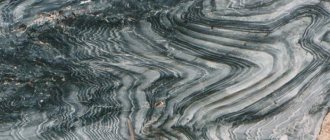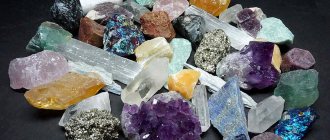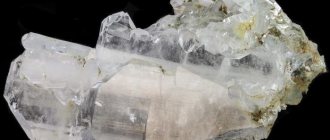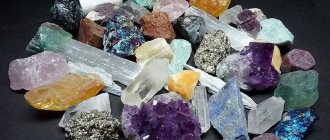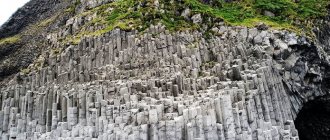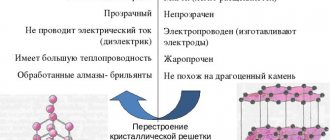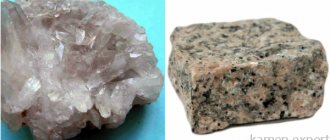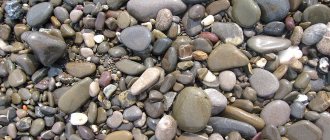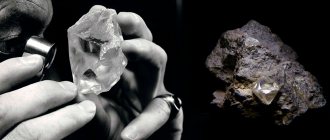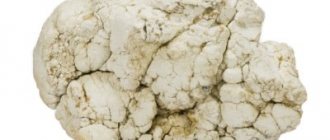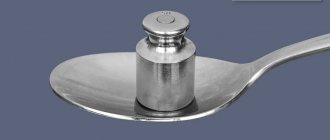There are 3 types of rocks - sedimentary, igneous - intrusive (intruded) and effusive (igneous), and metamorphic. The last 2 species, although they make up about 95% of the volume of the bark, have a small area of exposure to the surface. But sedimentary rocks, examples of classification of which can be found in any petrographic reference book, occupy 75% of the earth's surface. These include most of the minerals.
What are sedimentary rocks
Sedimentary rocks (SRP) are a category of fossils formed as a result of their settling on the bottom of water bodies and on continental zones under various circumstances. This can be sediment from water, the result of the vital activity of the Earth's flora and fauna, or destroyed rocks. Sedimentary rocks cover more than 70% of the planet's continental surface. Their mass is equal to a tenth of the total mass of the earth's crust. Geological research is carried out mainly on continental zones. Almost all the planet's minerals are, in one way or another, associated with sedimentary rocks.
Documentation of salary increases
If a change in wages occurs due to a change in the employee’s position, the following documents are needed:
- Employment history. A record of transfer to another position is made in it.
- Staffing schedule. It reflects the changed salary and position.
- Order T-5 or T-5a on transfer.
- An additional agreement is a document clarifying the employment contract in terms of payments and a new position.
If the employee remains in the same position, the procedure is as follows:
- A memo is sent to the director with a request to increase pay for a specific employee. The initiative can come from both the employee himself and his immediate supervisor.
- After approval, an additional agreement is drawn up and signed by both parties.
- Order to increase wages.
- Adjustment of staffing.
Classification of sedimentary rocks
All sedimentary rocks differ from each other in their varied composition, various conditions under which their formation occurred, properties and characteristics. There are rocks that consist of only one component. There are also multi-component UCPs. There is far from one general classification of them that would be suitable for both scientists and researchers. This happened due to the enormous variety of rocks, so all groups of researchers on the planet use different classifications.
UGPs are classified according to their composition:
- clastic;
- clayey;
- volcanogenic-clastic;
- biochemical;
- organogenic.
Breeds are also classified into groups:
- oxide;
- saline;
- organic;
- silicate.
Oxide rocks include hydrous, silicon, manganese, ferruginous rocks, and bauxite. Carbonate and phosphate sedimentary rocks are a salt group. The organic group of rocks includes oil, solid combustible substances, and anthraxolites. The composition of silicate rocks includes clays and clastic quartz-silicate rocks.
Clastic
As the name suggests, these rocks are composed of various fragments formed as a result of the physical breakdown of natural materials. They move across an area under the influence of the Earth's gravity with the help of water, wind or ice, after which they are deposited.
Clastic rocks are usually understood as gravelites, siltstones, sandstones, the fragments of which are represented by a variety of minerals. They are usually cemented by a substance that has a clay or carbonate composition. Clastic rocks also include sedimentary rocks that were initially broken into fragments and then cemented.
These rocks can be either loose and uncompacted (crushed stone, boulders, gravel, pebbles), or cemented and compacted (grus, blocky breccia).
Volcanogenic-clastic
These are rocks that consist of at least 50% volcanic rocks. They are formed during eruptions of lava, volcanic sand, and dust. The composition should contain less than half of admixtures of other rocks that are in no way related to the activity of volcanoes.
According to their origin, volcanogenic-clastic rocks are divided into explosive-clastic and effusive-clastic. The first were formed as a result of explosive eruptions, which resulted in accumulations of loose material. Next, this material was fastened together using cementation. Effusive clastic rocks were formed due to the process of crushing lava as it cooled.
Volcanic clastic rocks are commonly used for the manufacture of a variety of building materials. This includes cement, glass, and materials used for thermal insulation.
Clayey
These are the most commonly found sedimentary rocks. They occupy more than half the volume of all rocks on the earth's crust. They mainly consist of small particles and are formed as a result of weathering of igneous rocks.
Clay rocks are divided into clays and mudstones.
Clays soak well in an aqueous environment, quickly absorb moisture, becoming soft and plastic. The color of these rocks is varied and depends on which minerals are included in the composition. Clays are divided into kaolins, bentonites, and hydromica clays. Kaolins have a greasy texture and do not swell in an aqueous environment. Used as raw materials in the production of porcelain and earthenware. When bentonites enter an aquatic environment, they swell and acquire plasticity. Hydromica clays do not expand in water. These rocks are used to produce ceramics and fire bricks.
Mudstones are high-density clays that do not become wet in an aqueous environment. They include quartz, mica, and spar. In terms of color, mudstones are darker than clays.
Biochemical
Biochemical sedimentary rocks are formed as a result of chemical reactions in which microorganisms and rocks of chemical and organogenic origin participate. They are cuprous, siliceous, carbonate and phosphate.
Cuprous sandstones and shale rocks that contain copper minerals are copper ore. Sandstone layers occupy a large area and are represented by minerals such as bornite, chalcopyrite, as well as sulfides of iron, zinc, lead, and cobalt.
Siliceous biochemical rocks have different mineral compositions. They are divided into diatomites, geyserites, tripoli, radiolarites, liddites. They differ from each other in the porosity of their structure, the volume of admixtures of clay substances, and have different colors.
Carbonate rocks were formed from shells, skeletons of marine and freshwater inhabitants, plants and bacteria, which accumulated over time at the bottom of reservoirs. They gradually became denser and changed their structure.
Phosphate rocks highly enriched in calcium phosphates. They have a layered granular structure. According to the conditions of formation and occurrence, phosphate sedimentary rocks are divided into several types of phosphorites: granular, aphanite, shell, strata and nodule. Phosphates accumulate at the bottom of reservoirs from various components of living matter: DNA molecules, RNA, tissues and cells.
Methods of formation of sedimentary rocks
The process of formation of sedimentary rocks is slow and gradual. It occurs on the surface, in water bodies and in the near-surface part of the Earth and has several stages:
- Formation of sediment.
- Transport of sedimentary material.
- Its accumulation in a certain place.
- The transformation of sedimentary material into rock (diagenesis).
- Compaction of materials (catagenesis).
- Deep transformation and maximum compaction of rock (metagenesis).
Diagenesis
Sediment that has formed at the bottom of a body of water or on the surface of the Earth consists of different layers. These layers in turn can consist of solid, liquid or gaseous materials. Over time, interactions between the phases begin, in which living microorganisms participate. The layers are being converted.
During diagenesis, all phases of sediment become compacted, excess moisture and unstable components are removed, and mineral rocks begin to form. This stage lasts for many decades and operates over a range of several tens of meters.
Catagenesis
Due to temperature, pressure and water masses, sedimentary rocks undergo significant changes. The chemical and mineral composition, structure, and properties change. The rocks become even more compacted, changing their structure, forming new minerals. Unstable compounds disappear and recrystallization occurs.
Metagenesis
The process of metagenesis is similar to catagenesis, but here the compaction of rocks is affected by high temperatures, reaching 200-300°C in some areas. Sedimentary rocks in such conditions are compacted as much as possible. At this stage, the transformation of faunal remains occurs, as a result of which the rocks turn into metamorphic rock formations.
Reduction order
The first necessary condition is an order
Such an order has nothing to do with the reduction of an individual employee. This is a document marking the beginning of the downsizing process. There is no single approved form of this document. The manager can fill it out as he sees fit. The following points must be reflected:
- date of planned reduction;
- employee notification period;
- planned changes in staffing.
The procedure for notifying an employee follows the following principle:
the employee must be given a personal notice 2 months before dismissal, he personally signs for its receipt.
The notification contains information about:
- when the dismissal is planned;
- what are its causes;
- Are there any vacancies?
The employer is required to notify of all open vacancies prior to dismissal.
If there are vacant positions, the manager must familiarize the dismissed employee with them (Article 180 of the Labor Code of the Russian Federation). He is also notified of all new vacancies that appear within 2 months before dismissal. Both positions of equal value, both higher and lower ones, are taken into account if the health of the dismissed person allows them to be taken.
He also has the right not to remain in this organization. If agreed, a transfer to the selected location at the same enterprise is issued. In case of refusal, dismissal is carried out under Art. 81 Labor Code of Russia (clause 2, part 1).
An employee can accept an offered vacancy at any time; there are no legal restrictions.
Age of sedimentary rocks
Their age can be determined relatively. The rocks that are accessible for further study are believed to be 3.8 billion years old. The layers that are located in the deepest places are considered the most ancient. Phases located closer to the surface are younger in age.
The development of organic life on Earth was gradual. The remains of the simplest organisms are found in the most ancient rocks. The skeletons of more developed organisms are contained in younger rocks. Thus, all layers of sedimentary rocks have different structures, ages, and formation conditions.
Check for vacuum leaks
Vacuum leaks can cause or contribute to a wide range of engine performance problems, including hesitation.
Most vacuum leaks are caused by loose, broken, disconnected or damaged hoses, a faulty intake manifold, or faulty throttle body gaskets. This type of failure can have an adverse effect at idle and low engine speeds.
Check vacuum hoses, especially those used by sensors, for damaged or loose connections and contamination (oil, coolant).
A quick way to check the intake manifold and throttle body gaskets: Spray carburetor cleaner around the gasket while the engine is idling. If there is a leak, you will notice a difference in the engine's idle speed.
Check the fuel filter for clogging.
Properties of sedimentary rocks
Basic sedimentary rocks include limestone, sandstone and dolomite.
Limestone has many varieties and consists of calcium, magnesium, clay or ferrous impurities. These rocks are varied in composition, texture, and strength. Limestone is often used in construction, but it is also treated with water-repellent compounds. It tends to dissolve in water, although very slowly. Has pastel unobtrusive colors.
Sandstone is formed from grains of minerals that have been cemented by various substances. Has high strength and fire resistance. It is used in construction for finishing buildings, as well as in the production of decorations. The properties of the stone depend, as a rule, on the deposit and composition of the fragments.
Dolomite is a rock that contains at least 95% of the mineral dolomite. It has medium hardness and a variety of colors: white, yellow, gray or black with a greenish tint. Used in the metallurgical industry, it has high fire resistance.
Amphibolites
These minerals are formed by hornblende and plagioclase. The first is classified as ribbon silicate. Visually, amphibolites are schists or arrays of colors ranging from dark green to black. The color depends on the ratio in which dark-colored components are present in the mineral. Minor minerals of this group:
- pomegranate;
- magnetite;
- titanite;
- zoisite.
Minerals of sedimentary rocks
Minerals are various types of minerals and rocks used by humans to produce materials and run the national economy. Based on their physical state, fossils can be solid, liquid or gas. Hard rocks include coal, marble, granite, salts and ores. Liquids are mineral waters and oil. Methane and combustible gases are fossil gases.
According to the methods of application, they are divided into combustible, ore and non-metallic minerals. The group of combustible rocks includes coal, oil, peat and gas. Ore are a variety of rock ores. Non-metallic minerals include sand, clay, limestone, and salts.
Valuable ornamental stones and precious materials are not included in any of the listed groups, but are a separate category.
Gneisses
In its structure, gneiss is extremely close to granite. It is not always possible to visually distinguish these two minerals from each other, since gneiss copies granite and is close to it in physical parameters. But the price of gneiss is significantly lower.
Gneisses are widely available and therefore are useful in construction. Minerals are diverse and aesthetic. The density is high, so stone can be used as concrete aggregate. With low porosity and low ability to absorb water, gneisses have increased resistance to freezing. Since weathering is also small, the use of the mineral as a facing is allowed.
Sedimentary rock structures
Structure refers to various characteristics of rocks: the size and shape of particles, their interaction with each other, the degree of crystallization, and formation conditions. There is such a classification of structures:
- psephytic;
- psammitaceae;
- silty;
- pelitic.
The psephytic structure has a particle size of more than 1 mm. Fractions with this size are considered the largest. Psammitic structure - fragment size from 1 mm to 0.1 mm. Silty - particle size in the range of 0.1 - 0.01 mm. As a rule, clayey rocks have a pelitic structure, and the particle size in them reaches less than 0.01 mm.
Organic and inorganic sedimentary rocks
Organic rocks were formed as a result of the functioning of living organisms. They are divided into phytogenic, formed as a result of the vital activity of plants, and zoogenic, formed as a result of the vital activity of representatives of the animal world. Coal and some types of oil emerged from plant remains, and limestone from animals.
Inorganic rocks were created through the process of weathering. Their formation was also influenced by temperature fluctuations, wind strength and speed, and water fluidity in reservoirs. Rock salt, gypsum, gravel, sand, and pebbles are examples of inorganic rocks.
The simplest sedimentary rocks
Diatomaceous earth or mountain flour is a mineral that was formed from the simplest marine organisms. These were diatoms that already lived on Earth millions of years ago. From their valves, mountain flour was formed.
Diatoms look very unusual because they have a silicon shell. Thanks to this, mountain flour is saturated with calcium, silicon and many other minerals. These minerals are typically friable and gray or yellowish in color. In diatomite you can find particles of opal, clastic and clay rocks.
Human use of sedimentary rocks
People extract minerals in mines and quarries, and then use the items made from them in everyday life. In nature, rocks are found in solid, liquid or crumbly states.
From sedimentary rocks, people use salt for cooking, graphite for making pencils, coal and gas for heating, marble and limestone for construction, clay for making porcelain, gold and precious stones for jewelry. The amount of sedimentary rocks in metallurgy is more than 50%. The reserves of energy raw materials are different in all countries, since the resources are unevenly distributed.
Quartzite
This stone is known for its durability as it is formed by quartz with added impurities. Quartzite is formed from sandstone when the original elements of the mineral are replaced by quartz during regional metamorphism.
In nature, quartzite occurs in a continuous layer. Frequent impurities:
- hematite;
- granite;
- silicon;
- magnetite;
- mica.
The richest deposits are found in:
- USA;
- India;
- Russia;
- Canada.
Main features of the mineral:
- resistance to frost, moisture, temperatures;
- strength;
- safety, environmental cleanliness;
- durability;
- resistance to alkalis and acids.
